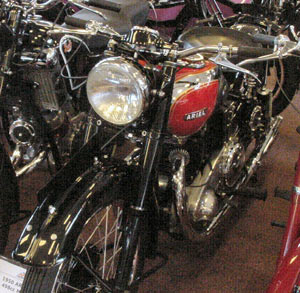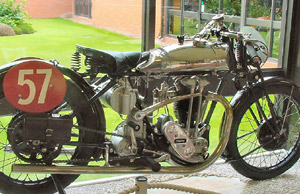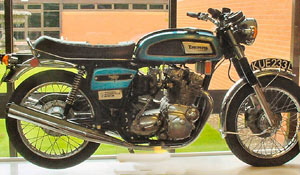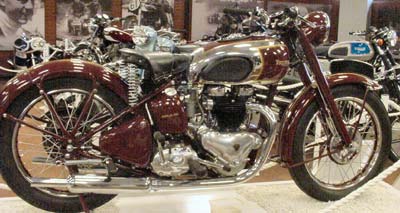Malcolm Uphill and Triumph Motorbikes - More Motorbike Stories
Malcolm Uphill: Birth and School Days
Malcolm was born in 1935 and lived in Trecenydd near Caerphilly in South Wales. He was educated at the Twyn School in Caerphilly and then at the local secondary modern school.

Early Working Life
After leaving school, Malcolm was given an apprenticeship at the Caerphilly Loco sheds. They were owned by British Rail. He trained successfully there as a fitter, turner and erector.National Service
Malcolm was keen to complete his national service when called up for it at age 18, but he had very serious hearing difficulties that caused him to fail his national service medical. He stayed on at the loco works, where he became a member of the boiler mounting gang at the Caerphilly loco sheds, where it was thought that he came into prolonged contact with asbestos.Hobbies and Interests
Malcolm enjoyed designing model aircraft, gliding and swimming. For years he competed in the Roath Park Lake swimming competitions and always managed to finish. He also became a keen motorcyclist. His first bike was a hand-changeBuilding and Modifying
The same skills that made Malcolm an expert in designing and building model aircraft also served him well as a modifier and improver of motorcycles, which he loved to work on during his racing career and for years after.Record Breaker
In 1969, Malcolm rode a Triumph Bonneville 650cc in the Isle of Man TT races and averaged 100 mph on it. This was a truly tremendous achievement. Sadly, he suffered a severe leg break when racing in Ulster the following year. Malcolm was rightly very warmly regarded in Caerphilly. He was awarded the Freedom of the Town in recognition of his racing success.Later Career
After Malcolm retired from racing and from his work in the loco sheds, he went into business for himself as a roller blind installation expert and did excellent professional work in that capacity. He also found enough spare time to carry on restoring motorbikes, which he enjoyed so much. Tragically, he died of asbestosis in 1999 when he was only 64 years old.Triumph Motorcycles - A Brief History
Triumph Motorcycles

The Start of Triumph
Siegfried Bettman of Nuremburg came to the UK in 1884. He was just 20 years old. He started his own business as an importer and exporter in London. His original goods were sewing machines and bicycles. In 1886, the business changed to The New Triumph Co Ltd. and in 1889 they moved to Coventry and began making Triumph Cycles. In 1898, they made their first motorcycles. By 1907 they were turning out 1,000 bikes a year.World War One Developments
In 1914, production at Triumph was switched to help the Allied war. Over 30,000 bikes were supplied to the Allies. These included the Model H Roadster, known as the “Trusty Triumph”. After the war, Triumph went in for cars as well, and the Triumph Super Eight appeared in the late 1920s.

Change of Ownership
In 1936, Jack Sangster of Ariel Motorcycles took over Triumph and in that same year, the company made its first exports to the USA. Edward Turner designed Triumph's 500cc Speed Twin - it launched in 1937.World War II
The devastating blitz of Coventry that began on September 7th, 1940 and continued until May of the following year. This caused very severe damage to the Triumph factory. Vital tools and machinery recovered from the site were transferred to the new works at Meriden.
 1946 Triumph 500 Speed Twin
1946 Triumph 500 Speed Twin
Post-war Era
Edward Turner’s Speed Twin design continued with great success after the Second World War. Also, models with a sprung rear hub became available then. Triumph received a tremendous publicity boost when Marlon Brando rode a Triumph 6T Thunderbird in his film The Wild One, made in 1953. John Bloor took over the Triumph name and manufacturing rights
This Month’s Charity
British Motorcycle Charitable Trust (BMCT0) (Charity No. 509420)
A Charitable Trust, dedicated to supporting the preservation and restoration of British Motorcycles. By identifying and securing rare British motorcycles and ensuring their restoration, they aim to protect and increase public access to these fascinating machines and their history to educate, interest and inform on this aspect of our social and sporting engineering heritage.

Helmut
28 Dec 2012
For any blog enquiries, please emailmarketing@webuyanybike.comView all posts by Helmut

